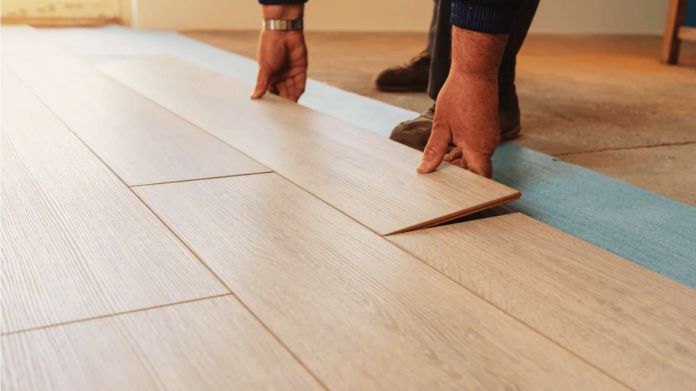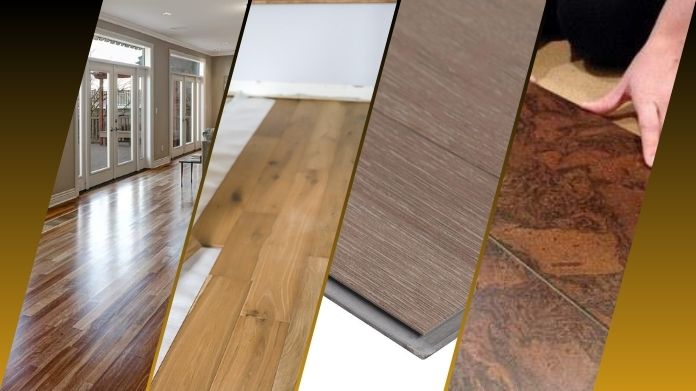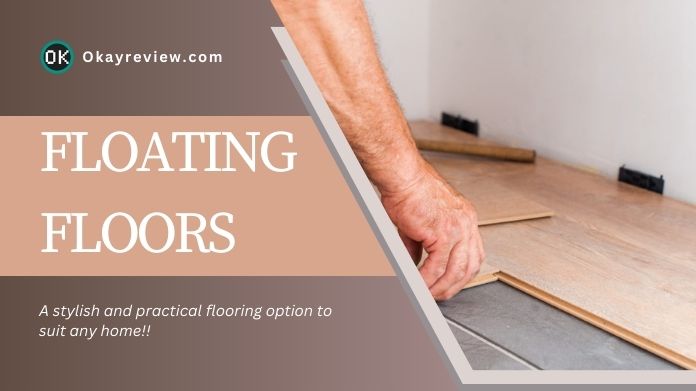When we talk about updating our homes, flooring is a big deal. It can change the whole look and feel of a space. That’s where floating floors come in.
What are floating floors? They’re a modern flooring choice that’s easy to install, budget-friendly, and comes in many styles.
This Okayreview guide dive into what floating floors are, how to install them, their benefits, and the available types.
Whether you’re renovating your home or just looking for a fresh new look, understanding floating floors can help you make the best choice for your space.
Let’s explore this versatile and stylish flooring option.
Table of Contents
What are Floating Floors?
Floating floors are a popular flooring that doesn’t need to be nailed or glued down to the subfloor. Instead, these floors are made of planks or tiles that lock together like magnetic flooring but sit on the subfloor.
This makes them “float.” This floor is great because it’s easy to put in, and you can do it yourself.
What are floating floors good for? They are perfect if you want a quick update to your room without much hassle.
You can choose from many styles, like wood or stone looks. They’re also not too expensive, which is great if you’re watching your budget.
When you install floating floors, you click the pieces together over your existing floor. This means you don’t have to rip out what’s already there. It’s a clean and quick way to get a new floor.
What are floating floors made of? You can find them in materials like laminate, vinyl, and engineered wood. Each type has its benefits, like being tough or looking nice.
One thing to remember about floating floors is that they can move under your feet. This is because they’re not glued down. But don’t worry, they’re still very stable and safe.
Installation of Floating Floors
 Installing floating floors is a task that many people can do themselves. It’s simpler than other flooring methods.
Installing floating floors is a task that many people can do themselves. It’s simpler than other flooring methods.
First, make sure your subfloor is clean and level. This is important because it affects how your floating floor looks and feels. If the subfloor isn’t flat, the floating floor won’t be either.
Next, lay down an underlayment. This is a thin layer that goes between the subfloor and your floating floor. It helps with noise and makes the floor more comfortable to walk on.
Now, start laying your floating floor planks. These planks have special edges that lock together. You don’t need glue or nails. Just click the planks into place. It’s like putting together a big puzzle.
As you lay the planks, leave a small gap around the edges of the room. The baseboard hides this space, which allows the floor to expand and contract with variations in temperature and humidity.
Finally, you can add the finishing touches once all the planks are in place. This includes putting back the baseboards and adding transitions between rooms if needed.
Benefits of Choosing Floating Floors
Choosing floating floors comes with lots of benefits. Here’s why they’re a great choice:
- Easy to Install: One of the best things about floating floors is how easy they are to put in. You don’t need special tools or skills. It’s a great DIY project.
- Cost-Effective: When considering floating floors, remember that they can save you money. They’re usually cheaper than other flooring types in terms of material cost and installation.
- Versatile: Floating floors work in any room. Whether it’s a cozy bedroom or a busy kitchen, there’s a type of floating floor that fits.
- Low Maintenance: These floors are easy to take care of. A quick sweep or mop keeps them looking good.
- Comfortable: Floating floors often feel softer underfoot than traditional hard floors. This makes them comfortable to walk on.
- Style Options: With floating floors, you have lots of styles to choose from. You can get the look of wood, stone, or tile without the high cost.
- Good for Rentals: If you’re renting, floating floors are a great choice. They can be removed easily, which is perfect if you move.
Types of Floating Floors
 When we talk about what are floating floors, we’re looking at a few different types. Each type has its own look and feel.
When we talk about what are floating floors, we’re looking at a few different types. Each type has its own look and feel.
Here’s a quick rundown:
- Laminate: This is a popular choice. Laminate floating floors are tough and can look like real wood or tile. They’re good for busy homes because they handle wear and tear well.
- Luxury Vinyl: These floors are great for areas that might get wet, like kitchens or bathrooms. They can look like wood or stone and are really easy to clean.
- Engineered Wood: This type gives you the beauty of real wood. It’s made of layers, which makes it stable and good for different climates.
- Cork: Cork floating floors are eco-friendly and comfy underfoot. They’re also good for reducing noise.
Considerations Before Choosing Floating Floors
Before you choose floating floors, think about a few things. This will help you decide if they’re right for you.
- Check Your Subfloor: The subfloor needs to be flat and stable. If not, floating floors might not fit right or feel good to walk on.
- Think About Moisture: Some floating floors don’t like water. Pick a type that can handle moisture if you’re putting them in a bathroom or basement.
- Room Use: How will you use the room? High-traffic areas need tougher floors. Think about this when you choose.
- Feel and Sound: What are floating floors like to walk on? They can feel different than glued or nailed floors. Some might sound hollow.
- Installation Skills: Are you planning to install it yourself? Floating floors are easier to put in than other types, but you still need DIY skills.
- Style and Look: Floating floors come in many styles. Make sure you pick one that matches your home and tastes.
- Budget: Think about how much you want to spend. Floating floors can be more budget-friendly, but prices vary.
Summing Up!
Floating floors are an excellent choice for those seeking a balance of style, functionality, and affordability. They are a flexible flooring solution because of their simplicity of installation and a vast selection of alternatives, which appeal to a variety of preferences and purposes.


I appreciate the apparent breakdown of floating floors and their pros and cons. The ease of installation makes them an attractive option for DIYers. Have you encountered any specific brands or materials that offer the best balance of durability and affordability? I would love to hear your recommendations!